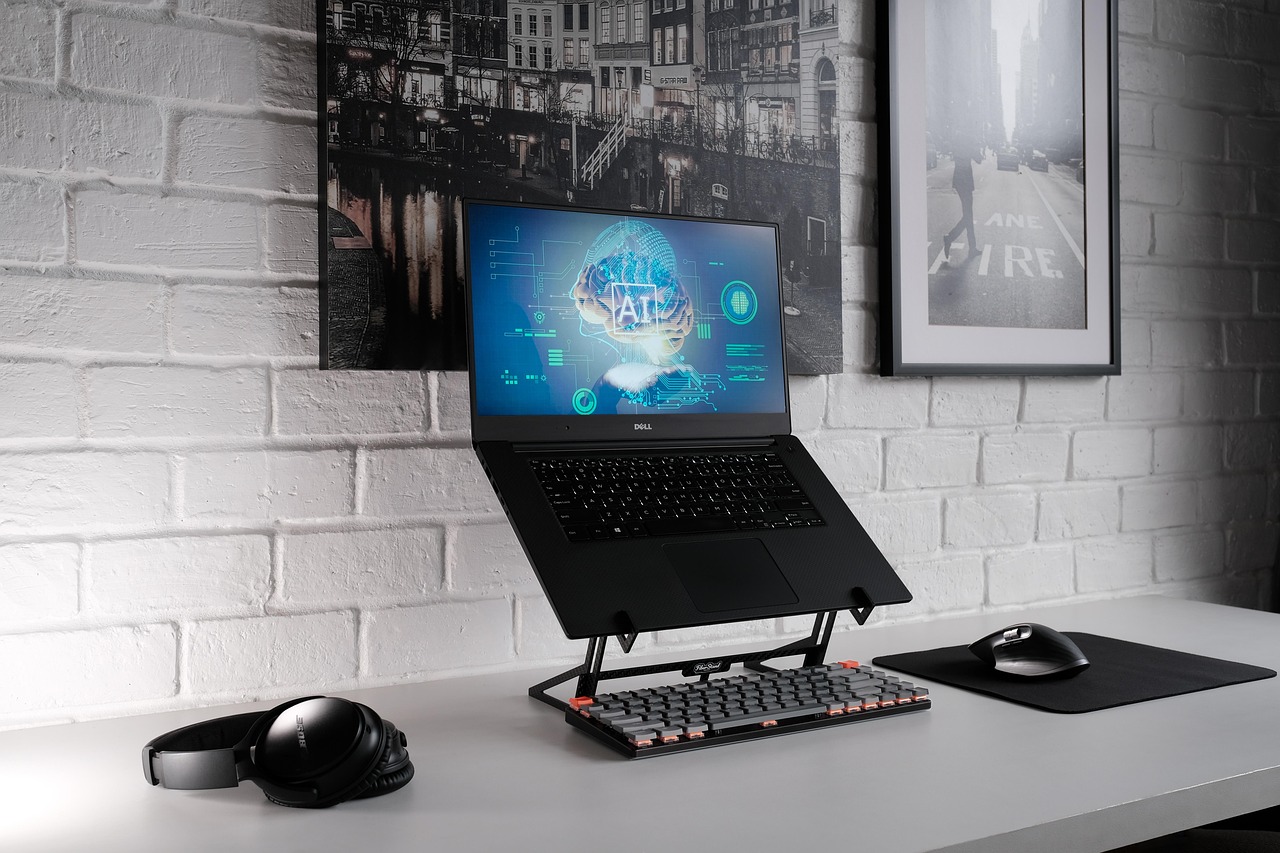Artificial intelligence (AI) is rapidly transforming industries, from healthcare to finance to transportation. But behind every groundbreaking AI application lies the unsung hero: AI hardware. This specialized hardware is designed to accelerate AI computations, enabling faster and more efficient training and deployment of AI models. Understanding the different types of AI hardware and their capabilities is crucial for businesses and developers looking to leverage the power of AI effectively. This comprehensive guide delves into the world of AI hardware, exploring its various components, applications, and future trends.
What is AI Hardware?
Defining AI Hardware
AI hardware refers to the physical components that are specifically designed and optimized to execute AI algorithms. Unlike general-purpose processors, AI hardware incorporates architectures and functionalities that significantly accelerate tasks like deep learning, machine learning, and neural network processing. This specialized hardware is essential for handling the computationally intensive demands of modern AI applications.
Why Specialized Hardware is Necessary
Traditional CPUs, while versatile, often struggle with the massive parallel computations required by AI models. AI hardware addresses this challenge by:
- Accelerating matrix multiplication: A core operation in many AI algorithms.
- Reducing latency: Enabling faster response times for real-time AI applications.
- Improving energy efficiency: Minimizing power consumption for large-scale AI deployments.
- Scaling AI workloads: Supporting the increasing complexity of AI models.
Types of AI Hardware
Graphics Processing Units (GPUs)
GPUs have emerged as a dominant force in AI acceleration due to their massively parallel architecture. Originally designed for rendering graphics, GPUs are exceptionally well-suited for the parallel computations required by deep learning algorithms.
- How GPUs Accelerate AI: GPUs excel at performing the numerous matrix multiplications and additions that are fundamental to neural network training and inference.
- Key Players: NVIDIA and AMD are the leading manufacturers of GPUs for AI. NVIDIA’s Tesla and AMD’s Radeon Instinct lines are specifically designed for data center AI workloads.
- Practical Example: NVIDIA’s A100 GPU, widely used in data centers, boasts exceptional performance for training large language models. Its tensor cores are optimized for AI-specific computations, significantly reducing training time.
Field-Programmable Gate Arrays (FPGAs)
FPGAs offer a unique blend of flexibility and performance. They are reconfigurable integrated circuits that can be customized to implement specific AI algorithms.
- Flexibility and Customization: FPGAs can be reprogrammed to adapt to different AI workloads and evolving algorithms, making them ideal for research and development.
- Energy Efficiency: FPGAs can be more energy-efficient than GPUs for certain AI tasks, particularly inference at the edge.
- Key Players: Intel (Altera), Xilinx (now AMD), and Microchip are major FPGA manufacturers.
- Practical Example: Xilinx’s Versal AI Core series is designed for accelerating AI inference in applications like autonomous driving and video analytics.
Application-Specific Integrated Circuits (ASICs)
ASICs are custom-designed chips tailored for specific AI applications. They offer the highest performance and energy efficiency but lack the flexibility of GPUs and FPGAs.
- Maximum Performance and Efficiency: ASICs are optimized for a single task, allowing them to achieve unparalleled performance in that specific area.
- High Development Costs: Designing and manufacturing ASICs is expensive and time-consuming, making them suitable for high-volume applications.
- Key Players: Google (TPU), Amazon (Inferentia), and Tesla are developing their own ASICs for internal use and cloud offerings.
- Practical Example: Google’s Tensor Processing Unit (TPU) is an ASIC designed specifically for accelerating TensorFlow workloads. TPUs are used extensively in Google’s data centers to power AI-driven services like search and translation.
Neuromorphic Computing
Neuromorphic computing is an emerging paradigm that draws inspiration from the human brain. These chips mimic the structure and function of biological neurons and synapses, offering the potential for extremely low-power and highly efficient AI processing.
- Brain-Inspired Architecture: Neuromorphic chips use spiking neural networks and asynchronous processing to emulate the brain’s energy-efficient computation.
- Low-Power Consumption: These chips have the potential to drastically reduce power consumption, making them suitable for edge devices and IoT applications.
- Key Players: Intel (Loihi), IBM (TrueNorth), and BrainChip (Akida) are actively developing neuromorphic computing platforms.
- Practical Example: Intel’s Loihi chip is being used for research in areas such as robotics and pattern recognition, where its low-power capabilities offer a significant advantage.
Applications of AI Hardware
Cloud Computing
AI hardware plays a vital role in cloud-based AI services, enabling organizations to access powerful AI capabilities without investing in expensive infrastructure.
- AI-as-a-Service: Cloud providers offer AI-as-a-Service (AIaaS) platforms powered by high-performance AI hardware, allowing users to train and deploy AI models through APIs.
- Scalability and Flexibility: Cloud-based AI hardware can be easily scaled to meet fluctuating demands, providing flexibility for businesses with varying AI workloads.
- Example: Amazon Web Services (AWS) offers a range of AI hardware options, including GPUs, FPGAs, and its own Inferentia ASIC, through its EC2 instances and SageMaker platform.
Edge Computing
AI hardware is increasingly being deployed at the edge of the network, bringing AI processing closer to the data source. This enables real-time decision-making and reduces latency.
- Real-Time Inference: Edge AI allows for rapid inference in applications like autonomous vehicles, smart cameras, and industrial automation.
- Data Privacy and Security: Processing data locally at the edge enhances privacy and security by reducing the need to transmit sensitive data to the cloud.
- Example: NVIDIA’s Jetson platform is a popular choice for edge AI applications, providing powerful GPU-based processing in a compact and energy-efficient form factor.
Autonomous Vehicles
AI hardware is essential for enabling autonomous driving capabilities.
- Sensor Data Processing: Self-driving cars rely on a multitude of sensors (cameras, lidar, radar) to perceive their surroundings. AI hardware processes this data in real-time to make driving decisions.
- Path Planning and Control: AI algorithms use the processed sensor data to plan optimal routes and control the vehicle’s steering, acceleration, and braking.
- Example: Tesla’s Full Self-Driving (FSD) computer uses custom-designed ASICs to handle the complex AI computations required for autonomous driving.
Healthcare
AI hardware is transforming healthcare by enabling faster and more accurate diagnostics, drug discovery, and personalized medicine.
- Medical Image Analysis: AI algorithms can analyze medical images (X-rays, MRIs, CT scans) to detect anomalies and assist radiologists in making diagnoses.
- Drug Discovery and Development: AI hardware accelerates the process of identifying potential drug candidates and predicting their efficacy.
- Example: GPUs are used extensively in medical research to train AI models for analyzing genomic data and predicting disease risk.
Future Trends in AI Hardware
Emerging Architectures
New AI hardware architectures are constantly being developed to address the limitations of existing technologies and further improve performance and efficiency.
- 3D Integration: Stacking multiple layers of chips vertically can increase density and bandwidth, leading to improved performance and reduced power consumption.
- In-Memory Computing: Performing computations directly within memory can eliminate the bottleneck of data transfer between memory and processing units.
- Optical Computing: Using photons instead of electrons for computation offers the potential for faster and more energy-efficient AI processing.
Quantum Computing
Quantum computing is an emerging field that leverages the principles of quantum mechanics to solve complex problems that are intractable for classical computers.
- Potential for Breakthroughs: Quantum computers have the potential to revolutionize AI by enabling the development of entirely new algorithms and solving problems that are currently beyond the reach of classical AI.
- Early Stage of Development: Quantum computing is still in its early stages of development, but significant progress is being made in building and programming quantum computers.
- Key Players: IBM, Google, Microsoft, and Rigetti are investing heavily in quantum computing research and development.
Software-Hardware Co-design
Optimizing both the software and hardware together is crucial for achieving maximum performance in AI applications.
- Compiler Optimizations: Compilers can be optimized to take advantage of the specific features of AI hardware, improving performance and efficiency.
- Algorithm Design: AI algorithms can be designed to be more hardware-friendly, reducing the computational burden and enabling faster execution.
- Example: TensorFlow and PyTorch, popular AI frameworks, are constantly being updated to support the latest AI hardware architectures and optimize performance.
Conclusion
AI hardware is the engine driving the AI revolution. From GPUs to FPGAs to ASICs and emerging architectures like neuromorphic and quantum computing, the landscape is constantly evolving. Understanding the strengths and weaknesses of each type of AI hardware is essential for selecting the right tools for the job. As AI applications become more sophisticated and demanding, the development of innovative AI hardware will continue to be a critical area of research and development. Businesses and researchers who invest in understanding and utilizing this technology will be well-positioned to harness the transformative power of artificial intelligence.




